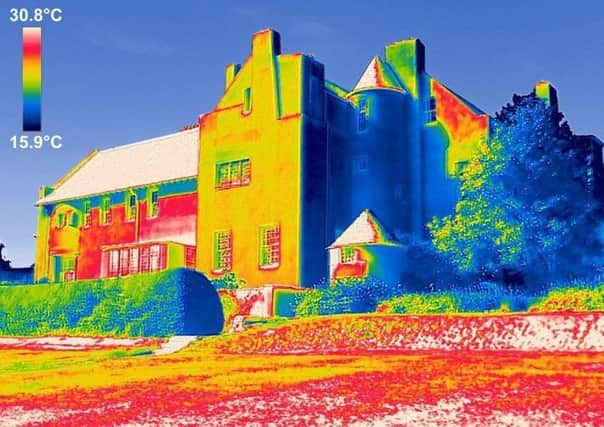Infra-red images reveal damage to Hill House worse than previously thought


The survey shows the extent of water damage to the building, with internal walls more damaged by damp than expected.
Infra-red thermographic (IRT) imaging records differences in surface temperature, which give an indication of where moisture from decades of wet weather is retained within the building fabric.
Advertisement
Hide AdAdvertisement
Hide AdThe survey has been carried out in partnership between the National Trust for Scotland (NTS), which owns and cares for The Hill House in Helensburgh, and Historic Environment Scotland (HES).
A previous survey was carried out in 2003 at the site and these fresh images have been combined with new 3D digital survey and microwave moisture readings.
The three surveys allow building conservators to pinpoint areas of damp and further understand the declining condition of the property. Since it was completed in 1904, years of wind and rain have caused significant issues with water ingress.
The conservation charity is in the process of surrounding the building with a mesh structure to protect it from the weather.
Richard Williams, NTS general manager for Glasgow and West, said: “By combining the infra-red thermographic survey, the 3D scan and the microwave readings, we have a very powerful tool to aid our technical understanding of the complex problems at The Hill House and a robust baseline before we surround the building with its protective shield. “We also now have additional areas of concern such as large sections of harling that have become disengaged from the walls where damp is accumulating and internal walls we hadn’t realised were so damp.
“We have also been able to see the direction that the water is travelling in some of the rooms, in particular in the exhibition room, where there was already clear damage.”
Dr Ewan Hyslop, head of technical research and science at HES, said: “We’re very pleased to offer our skills and expertise ... Hill House is a Mackintosh masterpiece and this project is a great example of how we can use innovative technology to better understand the risks to historic sites such as this and inform work to conserve and protect them.”
The house and gardens are closed to the public, but are expected to reopen in late spring.
The protection scheme involves building a “box” – a solid steel roof and a chainmail shield – around The Hill House at a cost of £4.5 million.